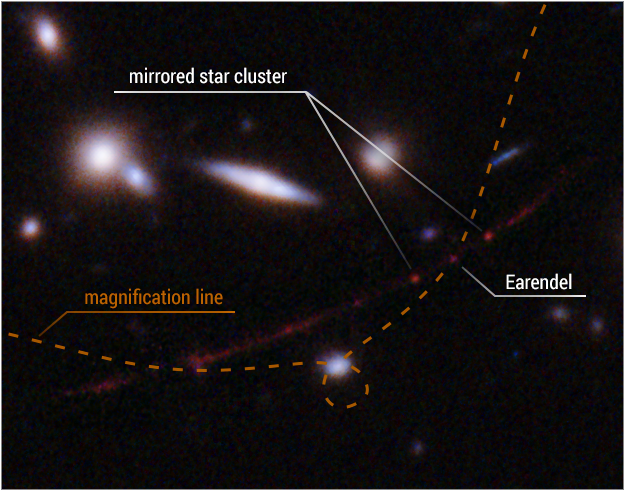NASA Observes Farthest Recorded Star
The farthest recorded star observed was confirmed on March 30 by NASA using the Hubble Space Telescope. The star was nicknamed Earendel, which means morning star. Light from this star takes about 12.9 billion years to reach Earth.
To put its distance from Earth into perspective, the previous record holder for farthest star was Icarus. Its light takes nine billion years to reach Earth. Earendel should not be confused with the oldest star, Methuselah, because it is much closer to Earth.
The star was discovered by measuring the redshift of the light. The term redshift is used as a measurement. As light moves farther away, its waves are “shifted” to a much longer wavelength. This means the light will appear red. A star with a lower redshift means it will take less time for the light to reach the observer while the light from a star with a high redshift will take more time.
The previous farthest star, Icarus, has a redshift of 1.5 while Earendel has a redshift of 6.2. Using the redshift method, while observing a distant galaxy called WHL0137-08, scientists noticed a fine detail within the galaxy. At these distances, most galaxies look like spots with minimal detail, so for something to be noticed is unbelievable. Earendel is estimated to have 50 times the mass of the sun and is brighter than it, too. With stars of this brightness, it could be possible that it has a companion star.
Most objects of this size and distance are still hard to see which proves that observing this star is a rare occurrence. The ripples of the fabric of space, created by the gravity of the surrounding galaxies, lined up just right, which allowed the star to be magnified and brightened for it to be observable.
This phenomenon can be equated to the ripples in a pool. When the ripples are formed, the light is shined from on top of the water and is distorted on the bottom of the pool. Certain areas on the bottom are brighter than others due to the water refracting the light. This is what happens to the light from Earendel.
With the newly operational James Webb Space Telescope, scientists are planning on furthering observations of Earendel with its high sensitivity for detecting infrared. With the James Webb Telescope, it can be confirmed if Earendel is even a star while measuring its temperature and brightness.
By finding out these basic properties, scientists can classify what kind of star it is. If further research finds that the star is made of primordial hydrogen and helium, it would be evidence of the existence of Population III stars, or stars that were the first born in the universe. The discovery of Earendel is a huge leap in the study of the universe, which might one day answer the questions revolving around the mysteries of the universe.















